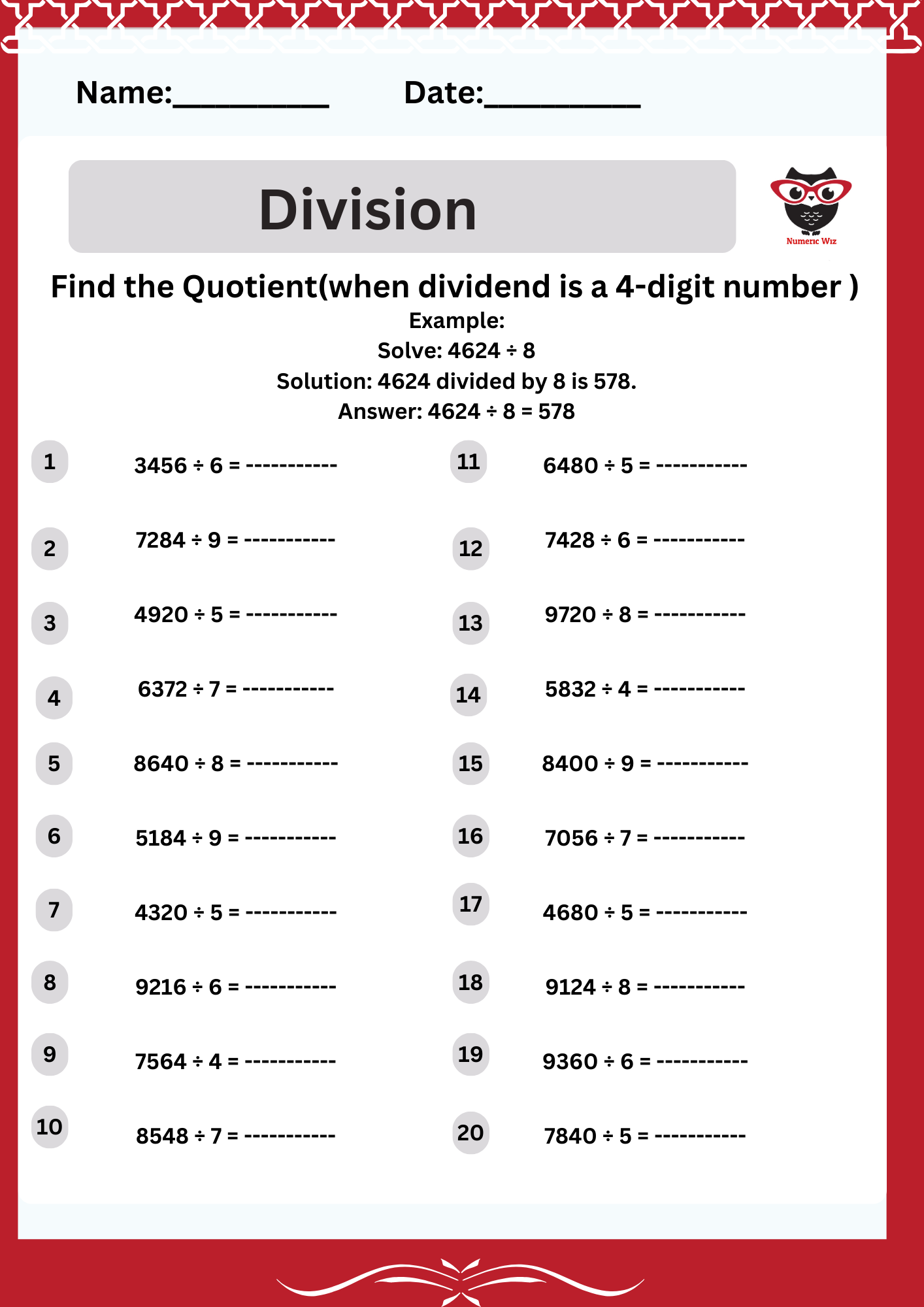
The division is one of the four basic arithmetic operations. It involves splitting a number (called the dividend) into equal parts, each containing a specified quantity (divisor). The result is called the quotient.
In simple terms, division answers the question,

How many times can one number fit into another?
For example, if you have 12 candies and want to split them equally among 3 friends, each friend would get 4 because 12÷3=4.
![]() Division as the Opposite of Multiplication: Division "undoes" multiplication. For instance, since 6×2=12, it follows that 12÷2=6.
Division as the Opposite of Multiplication: Division "undoes" multiplication. For instance, since 6×2=12, it follows that 12÷2=6.
Division by 1: Any number divided by 1 remains the same (e.g., 5÷1=5).
Division by Itself: Any number divided by itself is 1 (e.g., 8÷8=1), as long as the number is not zero.
Division by 0: Division by 0 is undefined, as it doesn’t result in a meaningful answer.
Divide: 4,824÷8
Solution:
Answer: 4,824÷8=603
Divide 9,648÷4.
Solution:
Answer: 9,648÷4=2,412

Dividing by 4 helps students understand equal sharing and grouping, essential for everyday problem-solving. These skills are crucial for understanding fractions, ratios, and more complex math concepts. Mastering division enhances logical reasoning and builds a foundation for advanced arithmetic operations.
By practicing division, you can solve real-world problems quickly!
For a limited time
